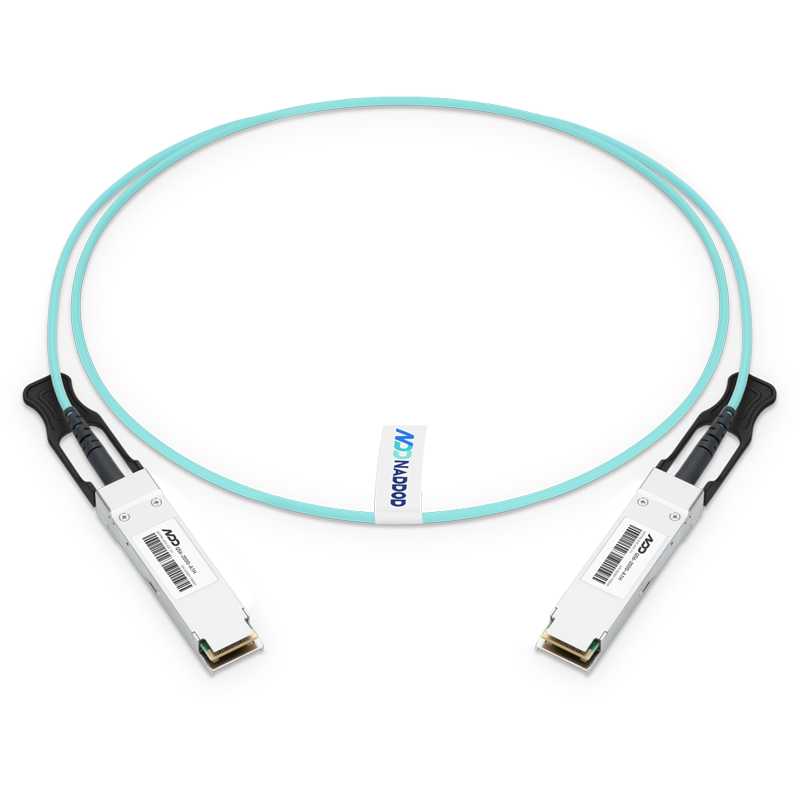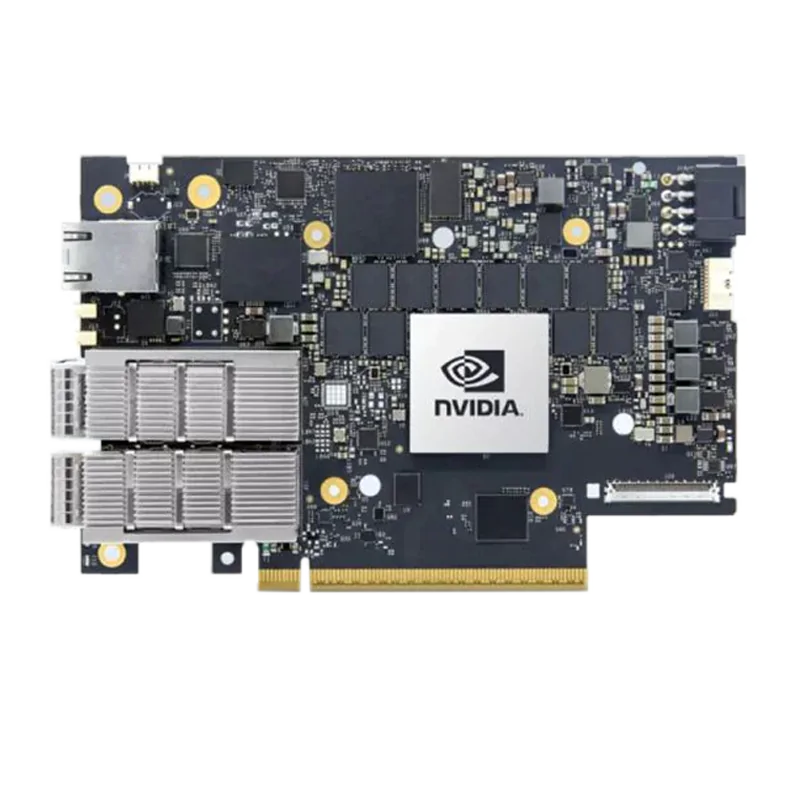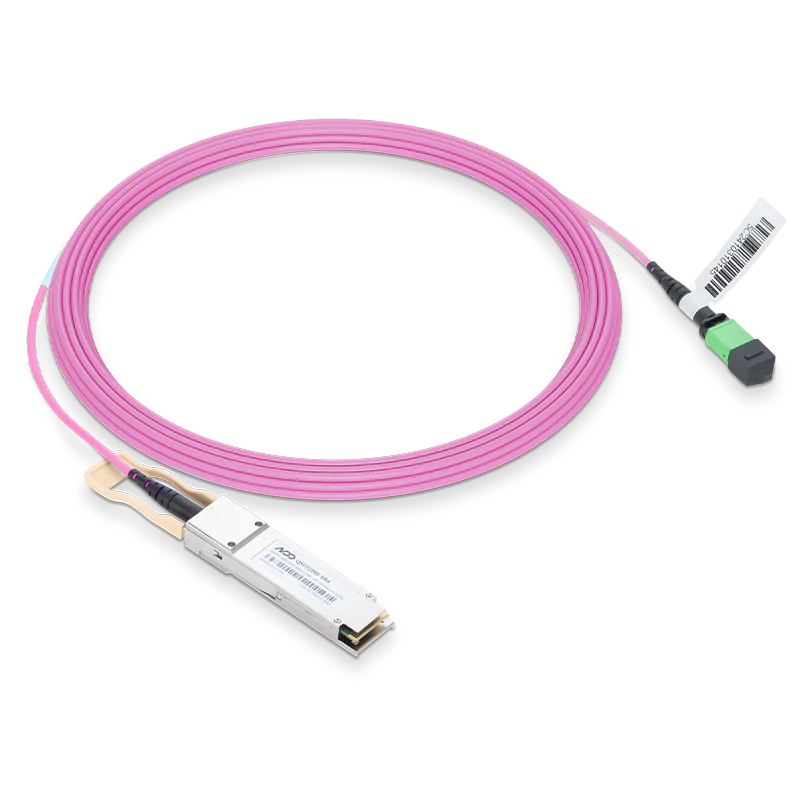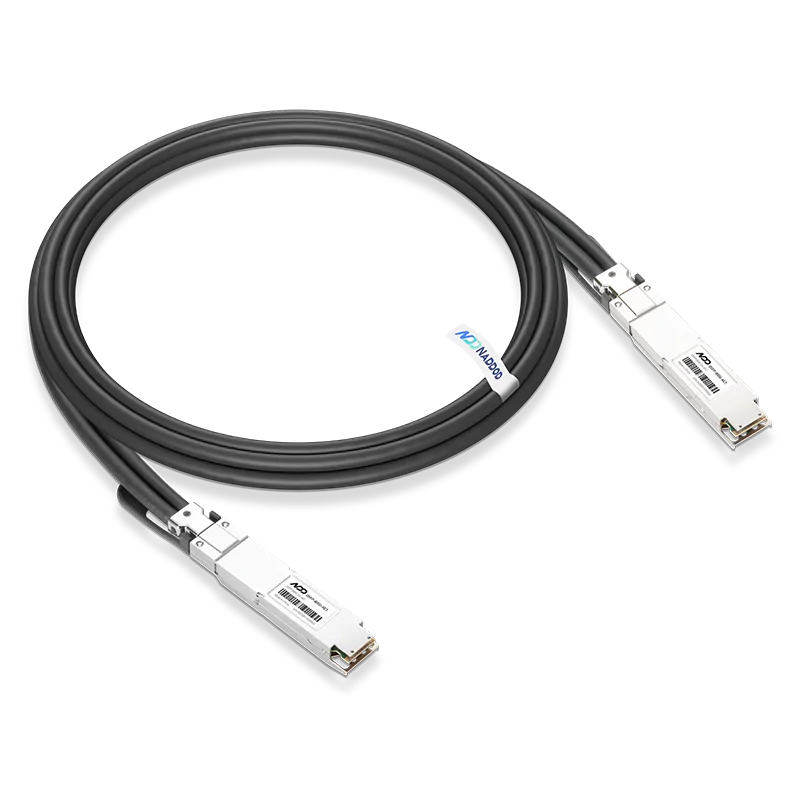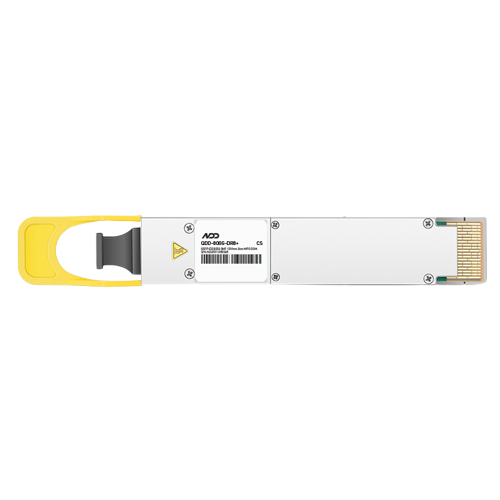Since the debut of the CFP Digital Coherent Optics (DCO) module, its significance in the optical communications industry has steadily grown. The launch of the CFP module facilitated the deployment of 100Gb/s DWDM coherent interfaces in a pluggable format similar to single-wavelength client-side modules.
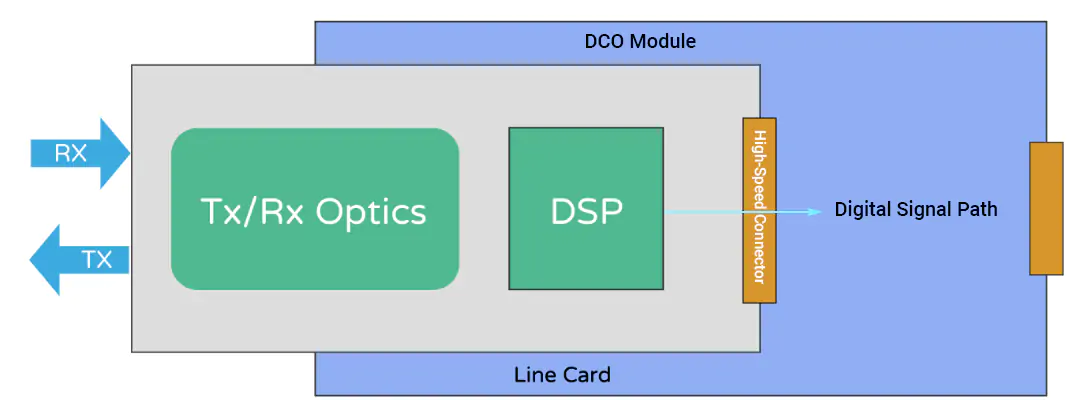
Coherent DCO module
With the progression of technology, interfaces capable of 200Gb/s have found applications within the CFP2 packaging, and more recently, rates of 400Gb/s have also been accommodated in formats such as CFP2, QSFP-DD, and OSFP. The term DCO has thus come to encompass all coherent modules in pluggable formats. A new generation of coherent line rates first appeared in discrete line card solutions and, about five years later, in pluggable modules, offering not only reduced power consumption but also broader market adoption.
At 100Gb/s rates, coherent solutions were predominantly used in long-haul and submarine communication markets; for 200Gb/s to 400Gb/s rates, metropolitan networks and Data Center Interconnects (DCI) have almost entirely shifted to coherent technology.
It is anticipated that the next generation of pluggable modules will continue to push this development trend forward, exploring new application fields and consistently enhancing speed.
The Evolution of Coherent Technology
As line rates increase to 800Gb/s, modulation schemes will need to achieve 120-130Gbaud, necessitating advanced process nodes for DSPs and appropriate adjustments in electro-optical design. 800Gb/s ASICs are expected to employ 5nm and 3nm silicon processes, achieving approximately 20-50% reduction in power consumption compared to the current 7nm process used for 400Gb/s. These advancements in process technology will provide more tailored tools for 800G applications.
Evaluating the required Signal-to-Noise Ratio (RSNR) for various modulation format receivers involves considering the imperfections of DSPs and optical components. The deviation between the actual RSNR and the theoretical RSNR (RSNRth) can be approximated through Eye Closure (EC) and Implementation Noise (IN), which represent the deviation from the ideal modulation point and the Gaussian white noise added to the signal, respectively.

800G Application Scenarios
800G technology primarily targets three key application scenarios: intra-data center interconnects, Data Center Interconnects (DCI), and metropolitan networks.
Intra-data Center Interconnects:
Optimized coherent solutions for single-channel 800Gb/s over distances of 2-10km are under development. In these short-distance applications, latency and power consumption are pivotal considerations. Ethernet, operating at rates up to 400GbE, employs Reed-Solomon FEC, typically maintaining latency below 100ns.
To meet these requirements, a coherent implementation using a serial FEC scheme has been designed. In the 800LR solution, to satisfy power, latency, and SNR requirements, an internal BCH(126,110) FEC code is added to the end-to-end RS FEC, providing a net coding gain (NCG) of 10.4dB.
 10km 800G Ethernet Serial FEC Design Diagram
10km 800G Ethernet Serial FEC Design Diagram
Data Center Interconnects (DCI):
800ZR applications span point-to-point links between 80-120km, utilizing the filtering capabilities of multiplexers and demultiplexers to provide high-capacity transmission.

DCI Architecture Diagram
At 400G, the OIF introduced a DCI application implementation protocol based on serial Hamming/Staircase FEC codes, achieving a net coding gain of 10.8dB, allowing the deployment of 64 channels at 75GHz spacing.
To upgrade to 800Gb/s, higher gain FEC and increased baud rates will be used to improve SNR tolerance. This can be achieved by using oFEC on 118 Gbaud DP-16QAM modulation, with a net coding gain of 11.6dB. 800ZR raises the OSNR requirement to 27dB to achieve coverage comparable to 400ZR.
Metropolitan Networks:
OpenROADM and ITU metropolitan network standards require longer coverage ranges, typically using wavelength-independent combiners to access ROADM, covering distances around 500km and crossing OADM nodes spaced tens of kilometers apart. To achieve these coverage ranges, transmission schemes with higher SNR tolerance are necessary.
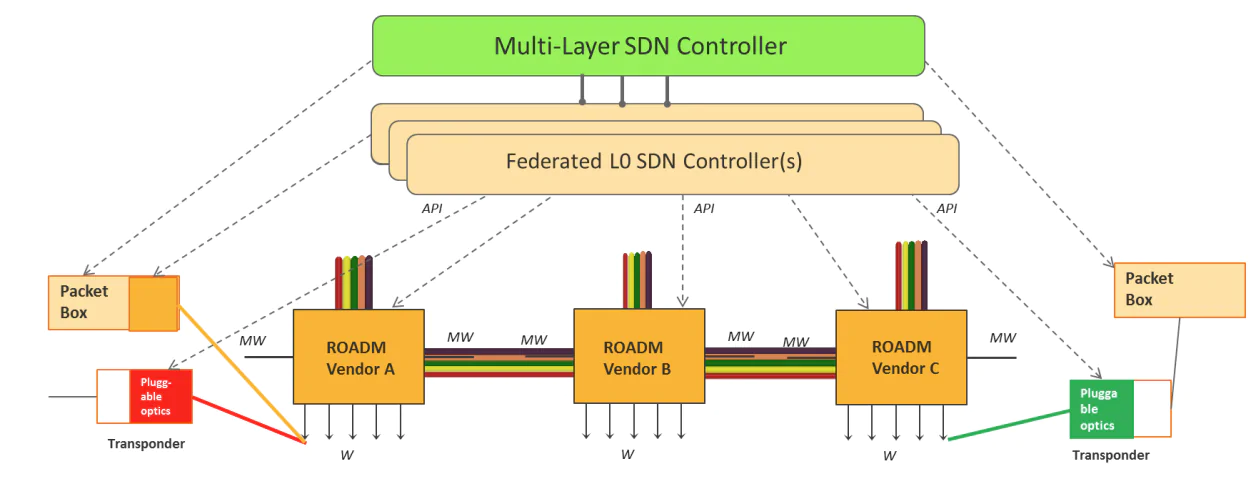 OpenROADM Architecture Diagram
OpenROADM Architecture Diagram
In 800G applications, Probabilistic Constellation Shaping (PCS) technology has been introduced to further enhance SNR tolerance, reducing the theoretical SNNR requirement by 0.8dB, including 16dB IN and 0.4dB EC items, achieving an improvement of about 1.5dB compared to unshaped 800G DP-16QAM.
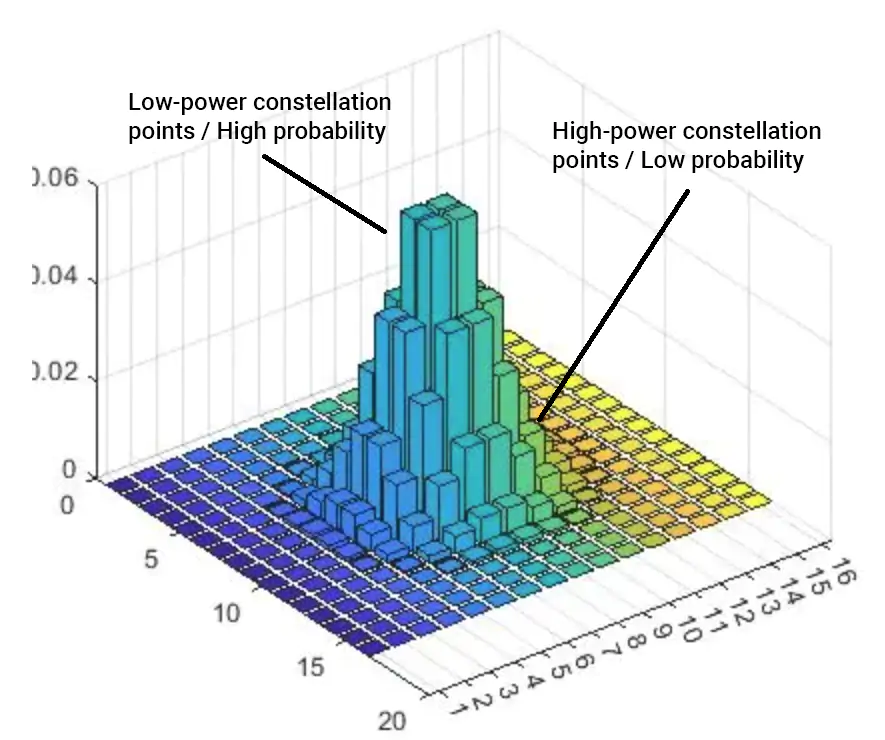
Conclusion
800Gb/s coherent solutions have been meticulously customized for single-channel, DCI, and metropolitan/ROADM applications, utilizing varying baud rates, FEC, and Probabilistic Constellation Shaping (PCS). As we approach the future challenges of 1.6T Ethernet rates, coherent technology will evolve, potentially adopting 2x800G solutions or increasing baud rates to the 200-240Gbaud range.
As data rates increase, coherent technology will need to be more adaptable, particularly for intra-data center interconnects where minimizing latency and power consumption is crucial. Improved sensitivity of QPSK is seen as a potential solution for achieving end-to-end RS FEC in DCI coherent links. In 1.6T applications, balancing power consumption and latency will be essential for customized coherent solutions.
As a leading provider of comprehensive optical network solutions, NADDOD continues to innovate, delivering reliable products and advanced solutions tailored to these evolving challenges. We offer complete solutions including switches, optical modules, AOC cables, DAC cables, and fibers for data centers, high-performance computing, edge computing, artificial intelligence, and other application scenarios. Our efforts focus on minimizing latency and power consumption, adapting our technologies to meet the advancing needs of complex network environments.
Our lossless network solutions based on InfiniBand and RoCE provide users with a high-performance, lossless network environment. For various application scenarios and user requirements, we select the optimal solution to ensure high bandwidth, low latency, and high-performance data transmission. This effectively addresses network bottlenecks, improves network performance, and enhances user experience.

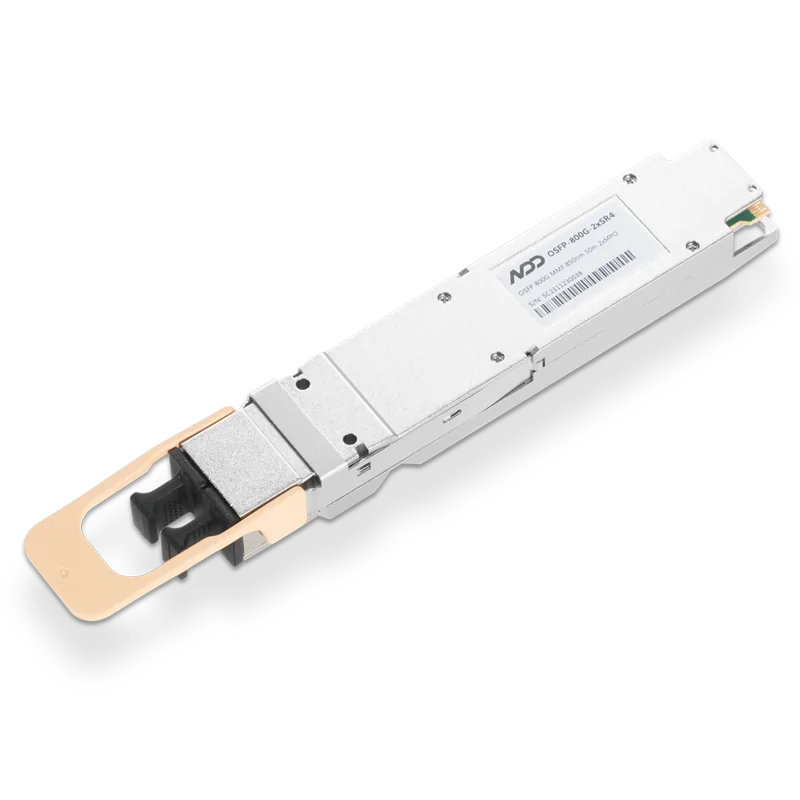 800GBASE-2xSR4 OSFP PAM4 850nm 50m MMF Module
800GBASE-2xSR4 OSFP PAM4 850nm 50m MMF Module




